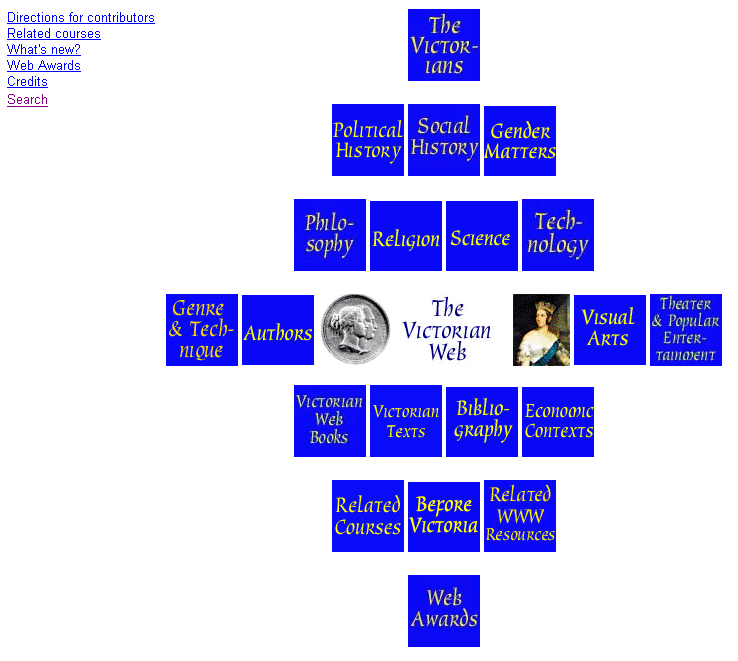Navigation
in
Hypertext
Maps
According to Neumueller, there are two basic types of maps:
1. The map showing how to reach a single location.
2. The overview map providing hierarchy views for structural navigation.
Overviews, which can take many forms, are author-created (as opposed to system-generated) documents that serve as directories to aid in navigating materials [Landow]. An overview may be text-based or image-based. It can present only on subject or many different subjects. It can also be a suboverview. This is an example of an overview that presents many points of view from which readers can approach the subject.

Source: http://www.scholars.nus.edu.sg/landow/victorian/index.html
Overviews are created to be appropriate to the subject they have to present. The most important form of subject overviews is a graphical concept map that suggests visually that various ideas related to some central phenomenon or impinge upon it [Landow]. It represents the knowledge structures and is used mostly in education.
"Overview diagrams display hypermedia nodes and links graphically. They can be web views (representation of the hypertext) or views of visited links (representation of the visited subspace) , they can be global (for small closed corpus only) or local (current document and departing and arriving links), they can be static (computed at once before start) or dynamic (updated dynamically) , interactive (allowing direct access through clicking on the nodes) or not (display only). " [Zeiliger]
While many hypertext systems provide overview map, there are only some provide the first type of maps. Overview maps seem to be the most used navigation tool and helpful for users in navigating. In addition, it gives users some ideas about what they are going to see. However, overview map is not effective for large hypertext systems because of its increasing complexity.
Last modified: 6 Nov 2002 by Kathy Nguyen Dang

